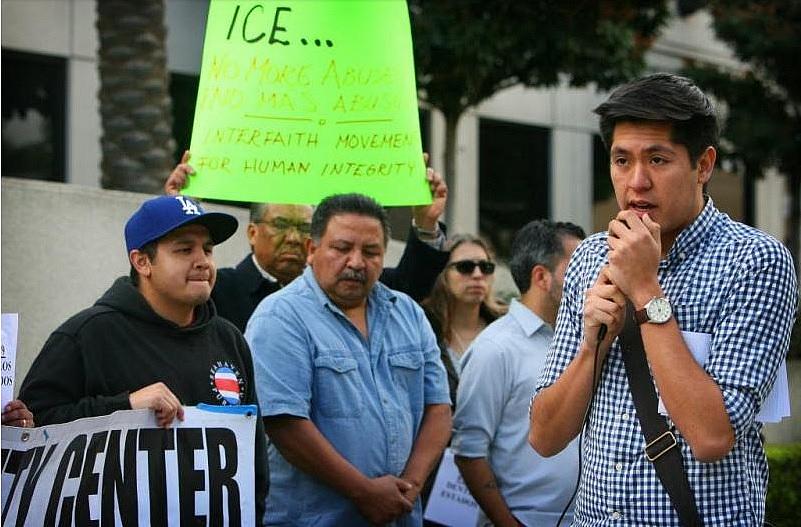What I learned from reporting on stigma and mental illness in Calif.'s Latino communities

Luis Nolasco, 25, says he has been not been able to find a culturally competent therapist within the network offered by his insurance plan. (Photo by Angela Maria Naso)
Reporting on mental health is a topic I had wanted to pursue for a long time. While browsing social media channels and news outlets over the past couple years, I’ve noticed a number of anti-stigma campaigns but none of them seemed to reach out to the Hispanic population.
Since I write for two ethnic outlets — Excélsior and La Prensa — that are geared toward Spanish and bilingual readers, I wanted to let those underrepresented voices speak and share their stories about what it was like to cope with mental illnesses, and what their barriers to care were. While it was not always easy, as the topic continues to be taboo, it proved to be a worthwhile endeavor. Here are some of the key lessons I learned along the way.
Dive right in on the reporting
One of the best reporting practices I found was to dive right in and go to places where people were talking about these issues. I attended a National Alliance on Mental Illness meeting in Spanish, for example, which really opened my eyes to the fact that the topic was a real concern among Latino families. They were extremely interested in finding out what they could do to help their loved ones who were struggling with mental illness. The room was packed and it was clear that the families were grappling with the same issues I was reporting on. I listened closely to hear what their concerns and questions were so that I could try to answer those in my reporting.
Another opportunity that helped me understand the scope of my topic was a field trip to a psychiatric hospital’s emergency unit in Riverside County. Even though I was not allowed to take photos or talk to any patients, I was able to get a feeling for what it was like to be admitted there. A reporter needs to know their subject well enough in order to tell the story accurately and paint a full picture for the reader. As it turned out, two out of the three patients I interviewed had been at that particular facility on more than one occasion. So when they talked about being admitted there during their interviews, I understood exactly what they were talking about.
Doing my homework
After I had decided on my topic, I tried to read everything I could get my hands on about mental illnesses, barriers to care and stigma in the Latino community. This helped me spot overarching trends and come up with better interview questions. Although I was intimidated at first, as time went on, I became an in-house expert.
The value of patience
Due to the sensitive nature of this topic, my sources were not always willing to open up about their struggles. It took time and perseverance to gain their trust. Luckily, I was able to find some great sources with the help of public information officers as well as through social media. I found sources who were essentially telling their mental illness stories directly to their friends on Facebook, so I approached them online to ask if we could talk more about what they were going through. That worked out very well.
Expect the unexpected
Around the time I was awarded the 2016 California Fellowship project, our newspaper company declared bankruptcy and went up for sale. It was unclear whether we would keep our jobs. Then, about half way into my fellowship project, my editor left the newspaper for another job. My duties increased from those of a general assignment reporter to editing and planning the entertainment section as well as continuing to report on a wide range of subjects. Thankfully, my new editor arrived in the middle of August, right before the project was due and just in time for him to edit my series.
The project was not always easy. But the more I got into it, the more I enjoyed reporting the series and had fun. The best part: The people I met along the way, especially the patients who were not scared to tell me about their journeys.
**

